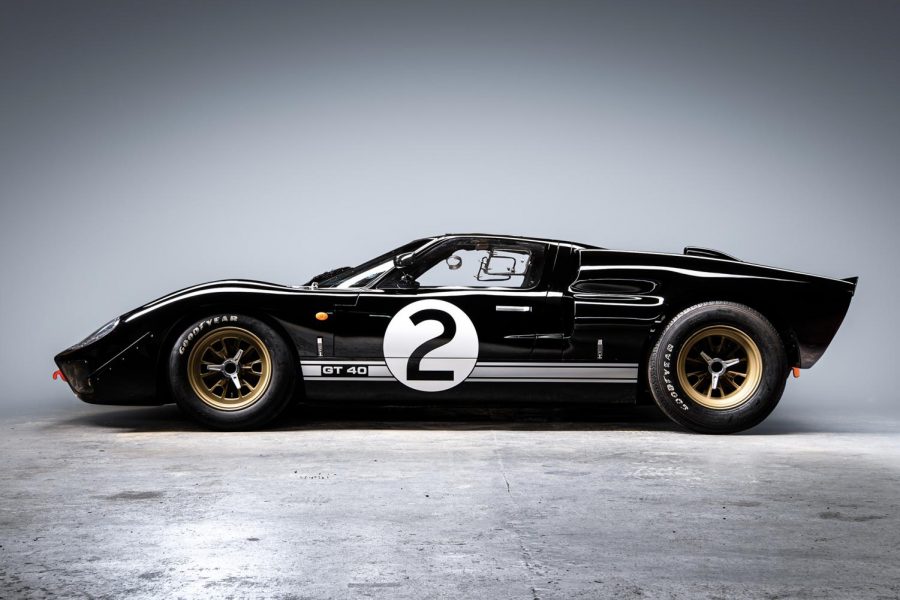Ford v Ferrari: a Heart-Pounding, Gas-Guzzling Marvel
Picture your classic renaissance car. Depending on the time period and place, you could be thinking of a sleek family sedan with long sweeping lines, or an Italian coupe with all round edges. Or, if you choose, a boxy, baby-blue Oldsmobile. In the late 1960s the Ford Motor Company realized that young, sprightly Baby Boomers didn’t want something as archaic as a boxy, baby-blue Oldsmobile; they wanted fast, competitive cars to match their attitudes. Another car company, Ferrari, specialized in making these cars. But when Ford offered to buy their company, Ferrari refused and even threw in a few insults to rub salt in the wound. Thus, the war begins.
Ford v Ferrari is a pleasant surprise. Director James Mangold, known for The Wolverine and Logan, provides something rare: a well-made, non-comic-inspired action flick. The lead actors are simply stunning. Matt Damon plays Texan Carroll Shelby, a former racer who left the industry due to health problems and turned to car design. Christian Bale plays Ken Miles, a Brummie racer and engineer. Shelby is enlisted by Ford to design a car capable of beating Ferrari’s automobile at the 24-hour Le Mans race. With the power of a giant at his back, Shelby turns to Miles to drive the car, the now-classic GT40.
The first five minutes of the movie set up Damon’s character masterfully. We see him covered in sweat and motor oil, yelling at his crew to keep refilling the car. Before cutting to a scene of him in the doctor’s office, we see him gasping for breath, lights dancing in his eyes. After his diagnosis, he handles the news with pain and dignity, both emotions apparent in his face. In almost any other movie, Shelby would be angry at the news, but Ford v Ferrari avoids this cliche.
Damon plays Carroll Shelby masterfully, but Christian Bale steals the show as Ken Miles. Miles ranges from mildly cheeky to brutally honest; in a second, he flips from witty to sullen. When he’s driving, he jokes and chuckles to himself, yet handles the car like a ballet act. At first, Ford rejects him as a racer. Miles doesn’t doesn’t rage or yell in protest, but offers some advice and walks out the door, dignified but disappointed. Although self-centered and cocky, we see that Miles is willing to put aside his interests for other people when he thinks it necessary. You can tell Bale had a blast performing this character.
And now we come to the real star of the movie: the racing. It is easy for high-speed pursuits to look fake, but Ford v Ferrari avoids that by tracking the GT40 as it winds around the race track, weaving between other cars and blazing past them. The brakes on the Ford car glow bright red in the rain; we can see the car straining under the immense pressure of a 24-hour race. The movie is so real that it almost feels as if the audience is also rumbling along at 200 miles an hour.
Ford v Ferrari also has beautiful sound design. The guttural feeling of the Ford V8 pounds through the screen. The gears whine. Brakes screech, teetering on the edge of finally giving out, sonically conveying the anxiety of the whole Ford team.
In other words, the GT40, as beautifully crafted as it is, always seems on the brink of high-speed failure, whether through driver error, engine failure, or the ever-present strain on the brakes. Very few movies have ever made me sit on the edge of my seat as much as this one. Ford v Ferrari is a celebration of a racing golden age. But this era has come to an end. Our current generation craves a new kind of car, a new kind of lifestyle. Ford v Ferrari acts as something rare: an ode to a disappearing era and a fantastic piece of cinema.
You can take the woman out of the bird, but you can't take the bird out of the woman: meet Yoon Lee.


